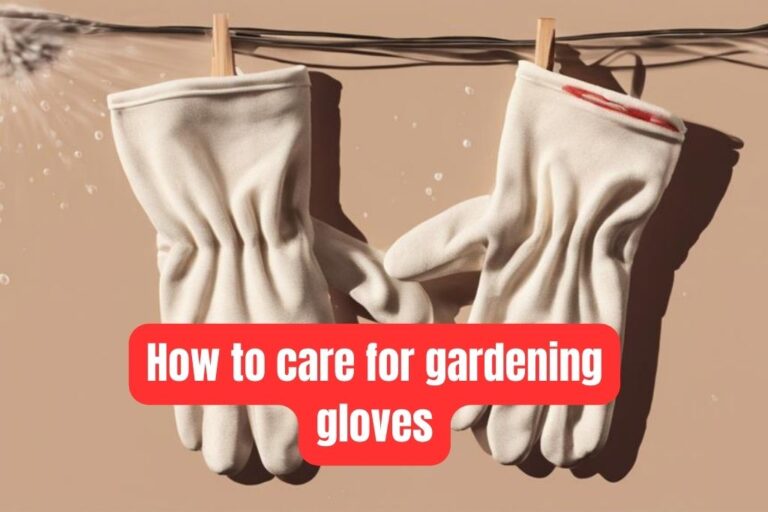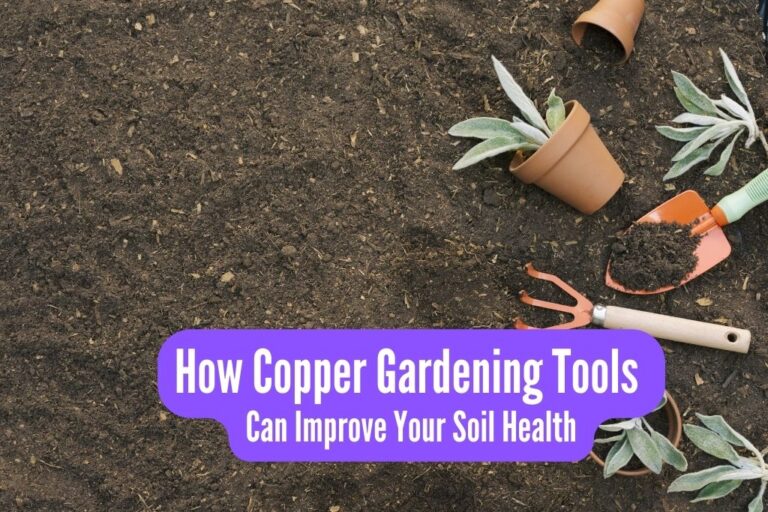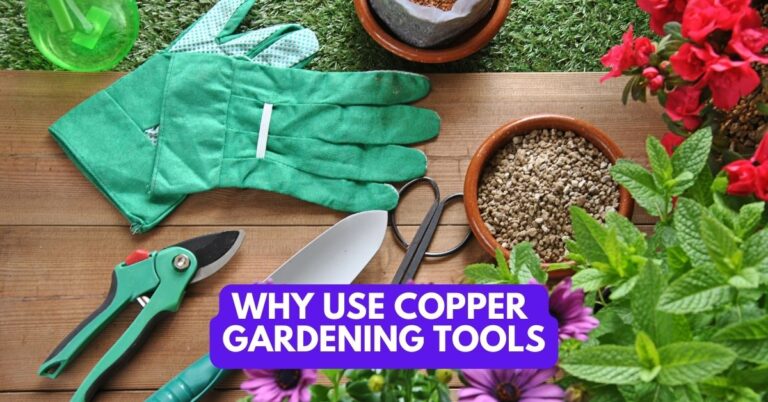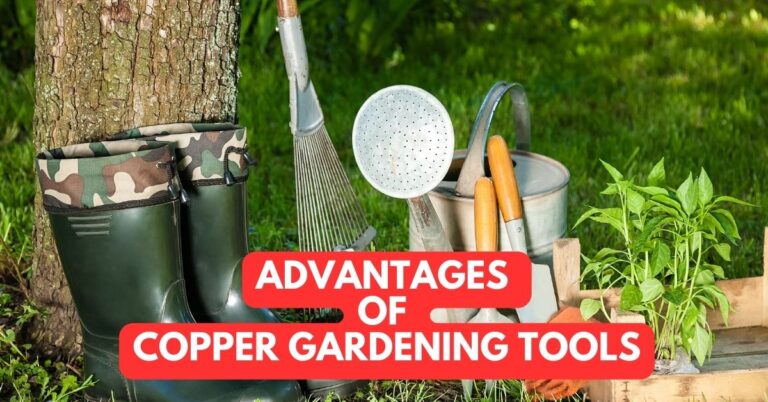How to Choose the Best Gardening Gloves
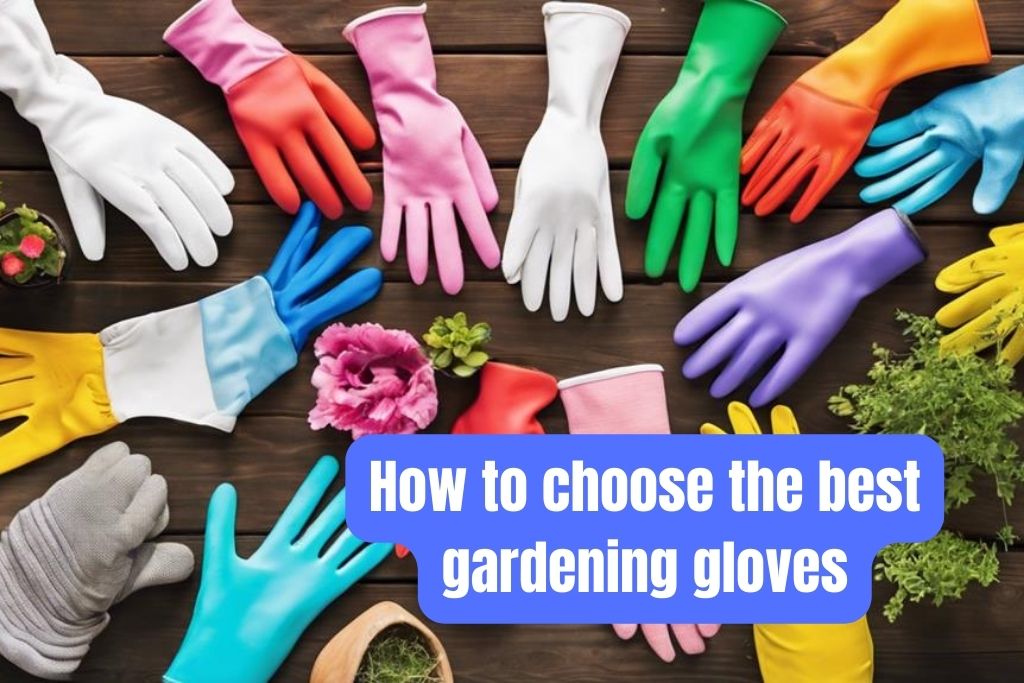
When picking the best gardening gloves, analyze your tasks, opt for the correct materials, ensure a snug fit, prioritize durability, consider reviews, and keep your budget in mind. By focusing on these aspects, you’ll find gloves that suit your needs and provide comfort and protection during gardening.
Importance of Gardening Gloves
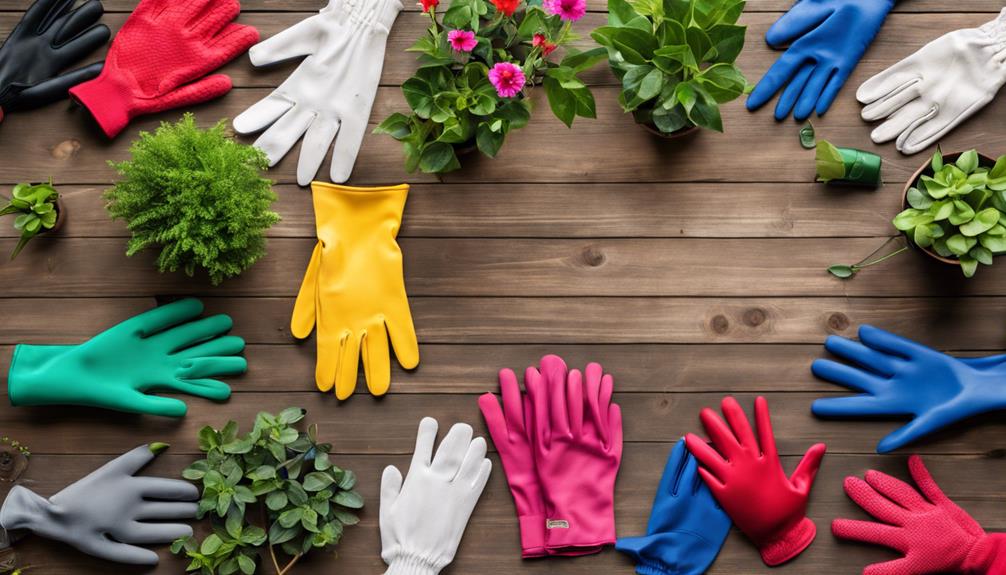
When you’re gardening, wearing gloves is crucial to protect your hands from cuts, blisters, and exposure to harmful chemicals in the soil. Choosing the right gloves allows you the freedom to work without worrying about injuring your hands. By safeguarding your skin, gloves give you the independence to dig, plant, and prune without hesitation.
Gloves provide you with the liberty to work efficiently and comfortably. Instead of holding back due to fear of thorns or rough surfaces, you can dive into your gardening tasks with confidence. With gloves, you can handle soil, rocks, and plants without a second thought, knowing your hands are shielded.
Having the appropriate gloves gives you the autonomy to experiment and explore different gardening techniques. You can try new plants, rearrange your garden layout, and engage in various activities without being limited by concerns about hand protection.
Embrace the freedom that gloves provide, allowing you to fully enjoy the beauty and satisfaction of gardening.
Consider Your Gardening Tasks
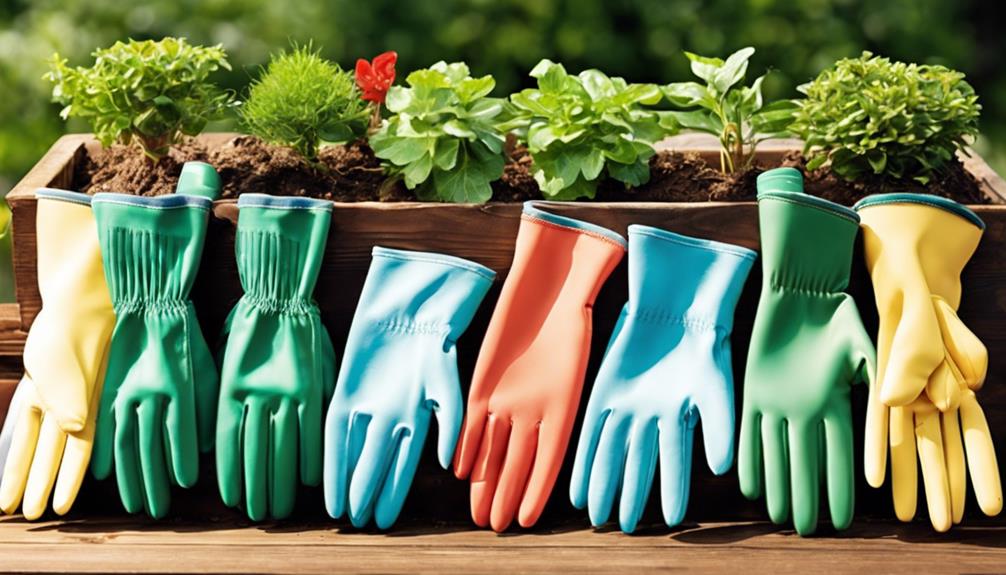
Select gloves that are tailored to the specific tasks you perform in your garden to ensure optimal protection and functionality.
If you find yourself frequently pruning thorny bushes or handling rough branches, opt for gloves with reinforced palms and fingertips to prevent scratches and cuts.
For weeding and planting, gloves with a good grip and flexibility will make your job easier, allowing you to work with precision and agility.
If you often deal with wet conditions, consider gloves that are water-resistant to keep your hands dry and comfortable.
When digging or handling heavy materials, choose gloves with extra padding on the palms and knuckles to shield your hands from blisters and impact.
Conversely, for delicate tasks like transplanting seedlings or handling small plants, lightweight and breathable gloves will offer the dexterity you need without compromising protection.
Material Matters: Leather Vs. Synthetic
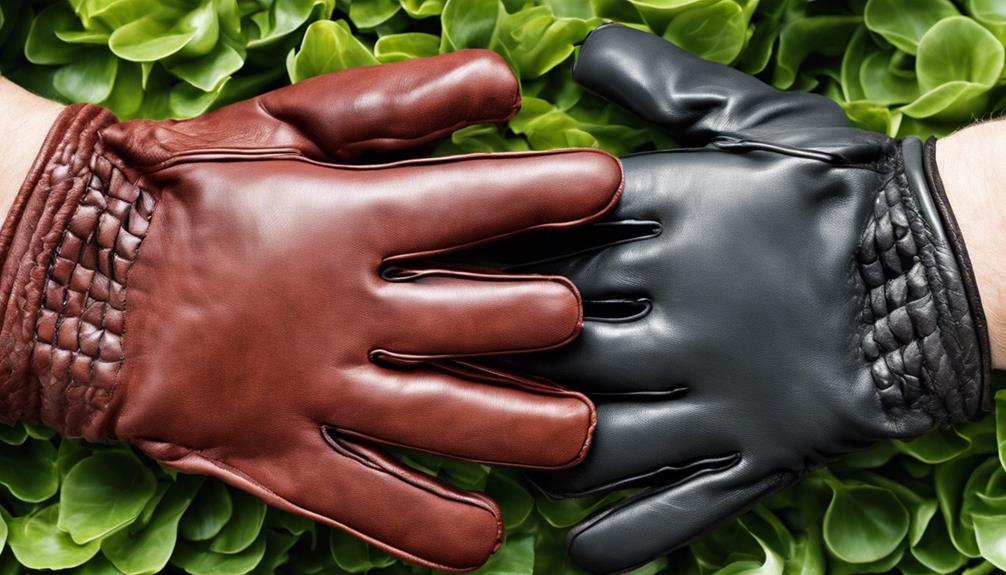
For your gardening gloves, understanding the difference between leather and synthetic materials is key in making an informed choice that suits your specific needs. Leather gloves are durable and provide excellent protection against thorns and sharp objects in the garden. They mold to your hands over time, offering a custom fit that enhances comfort. However, they can be heavier and may require more maintenance to keep them in good condition.
On the other hand, synthetic gloves are often more lightweight and breathable, making them ideal for tasks that require more dexterity. They’re also typically machine washable, which can be convenient for easy cleaning. However, synthetic materials may not offer the same level of durability as leather and may wear out more quickly.
Consider the type of gardening you do most frequently when choosing between leather and synthetic gloves. Leather for rugged tasks needing extra protection, and synthetic for lighter work that requires more flexibility.
Ultimately, the choice between leather and synthetic gloves boils down to your personal preferences and the specific demands of your gardening activities.
Finding the Right Fit
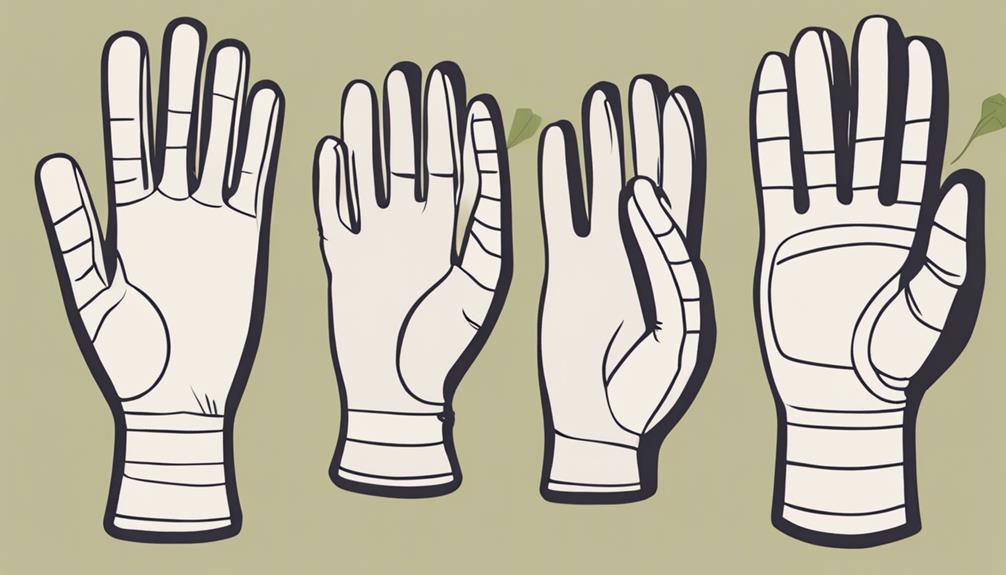
To ensure optimal comfort and functionality while working in your garden, finding gardening gloves that fit properly is essential. When selecting gloves, pay attention to how they feel on your hands. You want them to be snug but not too tight, allowing for flexibility and ease of movement. Avoid gloves that are too loose, as they can slip off or cause blisters due to excess rubbing. Check the sizing guides provided by manufacturers to find the best match for your hand measurements. Remember, a well-fitted glove should cover your palm and fingers fully without leaving any gaps.
Trying on different sizes and styles is key to finding the perfect fit for you. Don’t settle for gloves that feel uncomfortable or restrict your hand movements. Your gardening experience should be enjoyable and hassle-free, so take the time to find gloves that make you forget you’re even wearing them. A proper fit ensures that you can tackle any task in the garden with ease and confidence.
Durability and Longevity
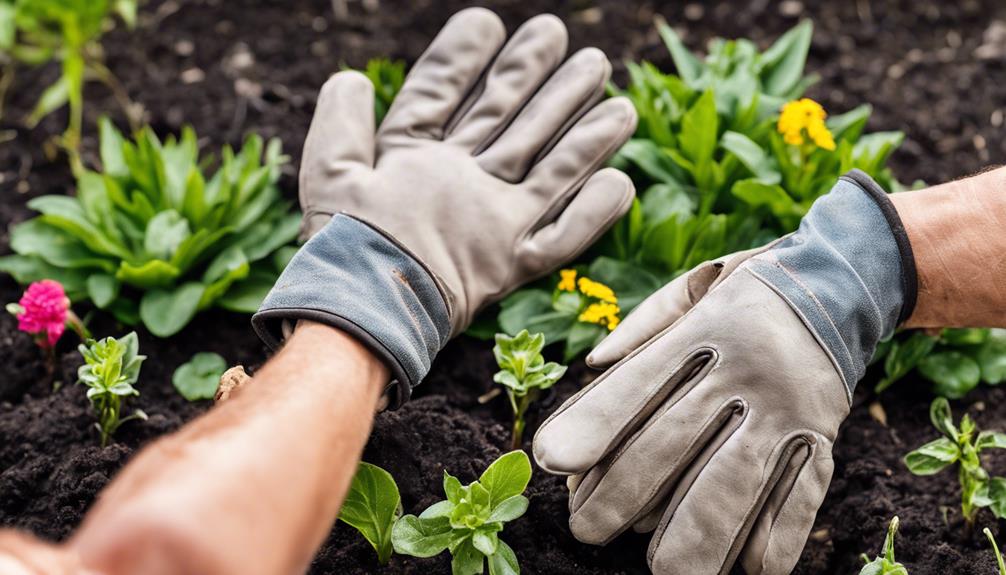
When considering gardening gloves, prioritize durability and longevity to ensure they withstand frequent use and last through multiple gardening seasons. Look for gloves made from sturdy materials like leather, synthetic leather, or reinforced canvas. These materials are tough enough to handle thorns, rough branches, and the wear and tear of gardening tasks without wearing out quickly.
Check the stitching on the gloves – reinforced stitching will prevent them from falling apart at the seams after just a few uses. Additionally, opt for gloves with double-layered fingertips and palms for extra protection in high-wear areas. Gloves with reinforced fingertips are ideal for tasks that involve a lot of pinching and gripping.
Water Resistance and Breathability
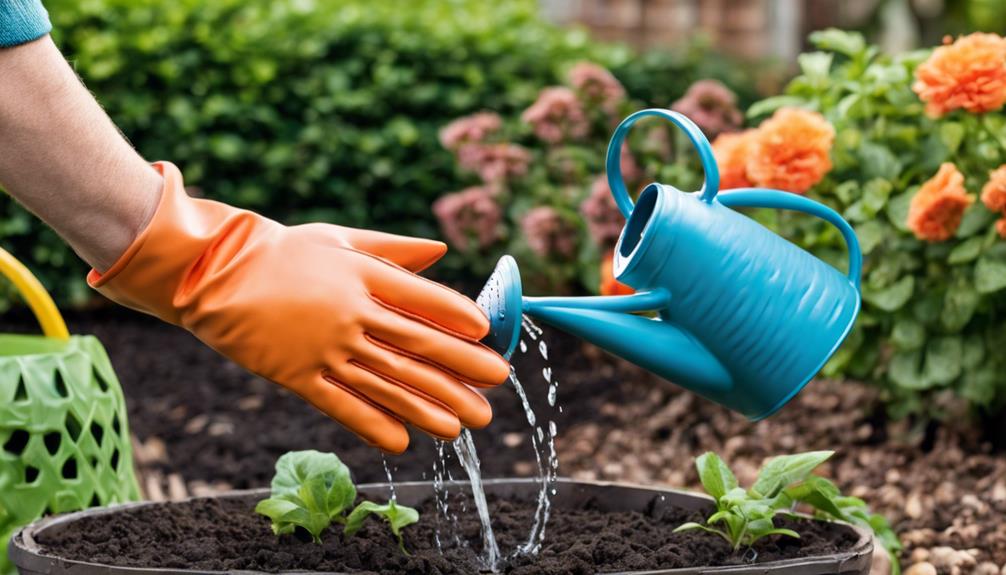
Prioritize gardening gloves that offer both water resistance and breathability to ensure your hands stay dry and comfortable while working in the garden.
When you’re out there tending to your plants, you want gloves that keep moisture out while still allowing your hands to breathe. Water-resistant gloves will shield your hands from damp soil and unexpected rain, keeping them dry and free from discomfort.
Additionally, breathability is key to prevent your hands from getting sweaty and clammy, especially during longer gardening sessions. Look for gloves made from materials like nylon or spandex that offer both water resistance and breathability, allowing you the freedom to move your hands easily and enjoy your time in the garden without feeling restricted.
Grip and Dexterity
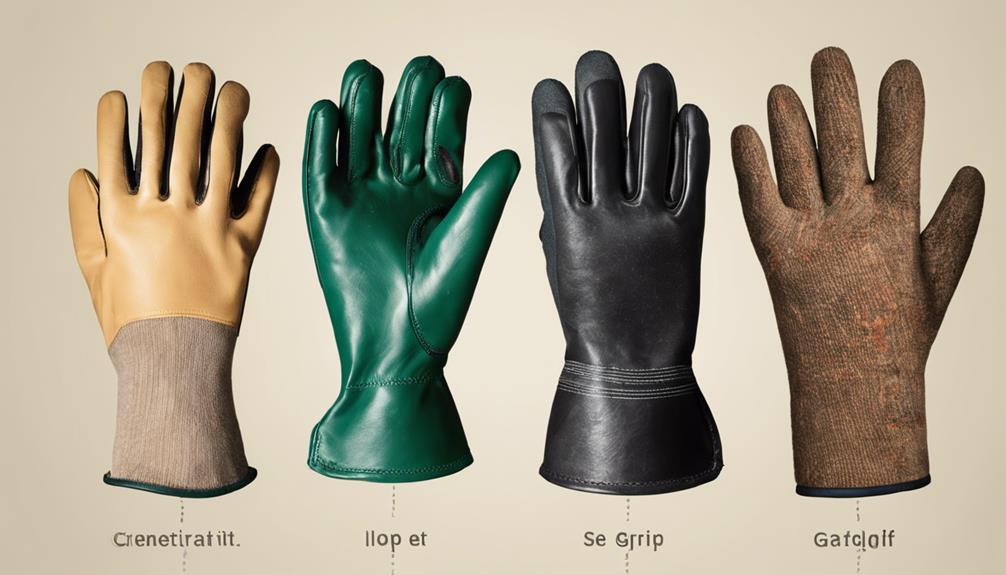
Ensure your gardening gloves provide a secure grip and allow for precise dexterity to handle tools and delicate plants effectively. Look for gloves with textured palms or fingers that offer a non-slip grip, especially when working with slippery tools or wet soil. A snug fit is crucial for maintaining control and preventing slippage during intricate tasks.
Consider gloves with reinforced fingertips or flexible materials that allow for natural hand movements. This flexibility ensures you can easily grasp small objects or perform detailed tasks without feeling restricted. Avoid bulky gloves that hinder your ability to feel and handle objects with precision.
When selecting gardening gloves, try them on and simulate actions you typically perform in the garden. Check if you can comfortably hold your tools and if the gloves allow for a full range of motion.
Protection Against Thorns and Pests
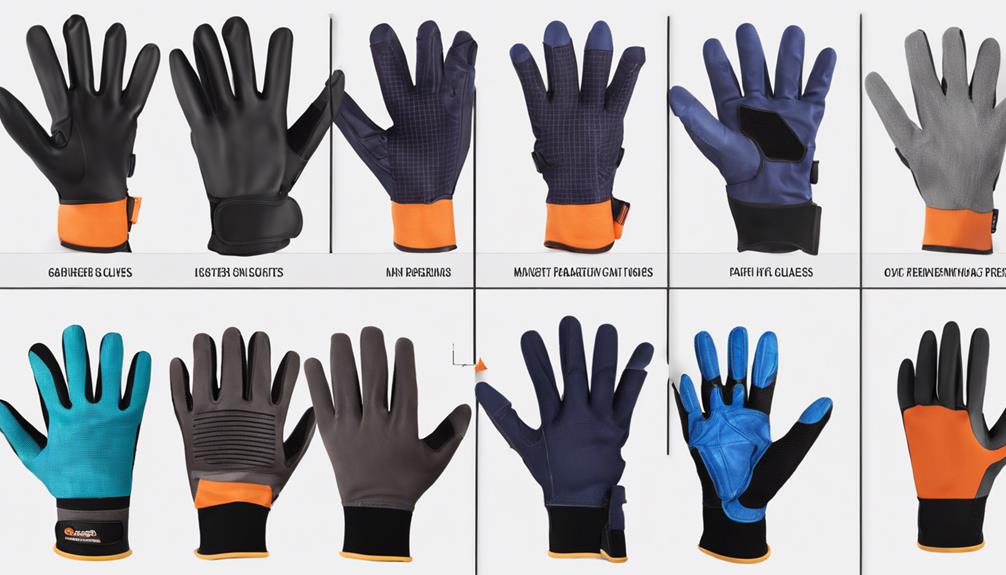
With gardening gloves, safeguarding your hands against thorns and pests is essential for a comfortable and safe gardening experience. When choosing gloves for protection, opt for pairs made from durable materials like leather or synthetic fabrics with reinforced fingertips. These materials act as barriers against sharp thorns, preventing painful pricks and potential injuries while you work in the garden.
Consider gloves that offer extended cuffs for added coverage, ensuring that your wrists and lower arms are shielded from scratches and insect bites. Additionally, look for gloves with a snug fit to prevent pests like spiders or ants from crawling inside, keeping your hands secure and free from unwanted surprises.
Comfort and Flexibility
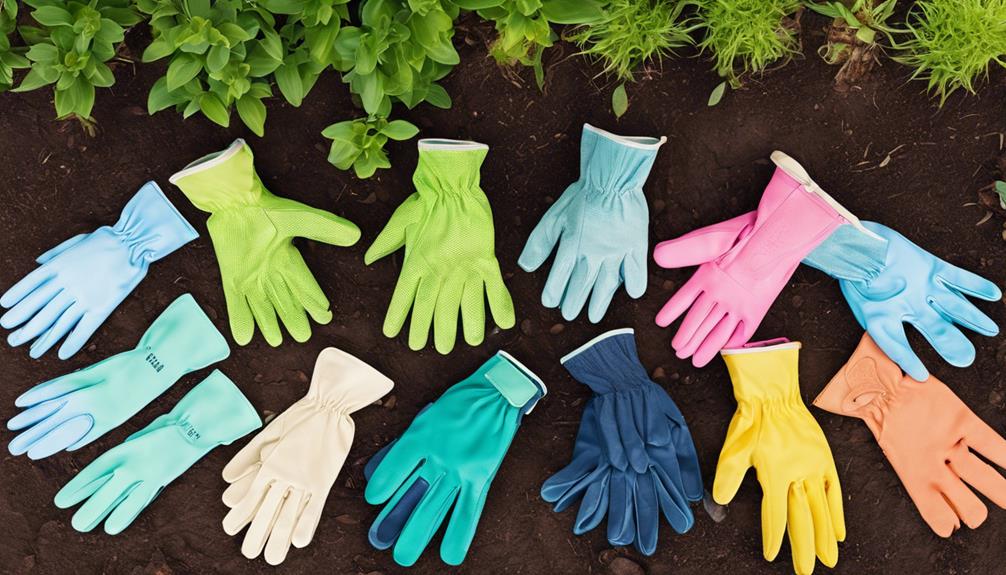
For a comfortable gardening experience, consider gloves that provide both flexibility and a snug fit. When selecting gardening gloves, opt for ones that allow you to move your fingers and hand freely. Gloves with stretchy materials like spandex or elastic cuffs can offer the flexibility needed for intricate tasks without sacrificing protection.
Look for gloves that contour to the shape of your hand, ensuring a close fit that doesn’t hinder movement. This way, you can easily grasp tools, pull weeds, or plant seeds without feeling restricted.
Avoid gloves that are too loose, as they can slip off or cause discomfort when handling delicate plants. On the other hand, gloves that are too tight might restrict blood flow and lead to fatigue or cramping. Finding the right balance between comfort and flexibility is key to enjoying your time in the garden without compromising on functionality.
Easy to Clean and Maintain
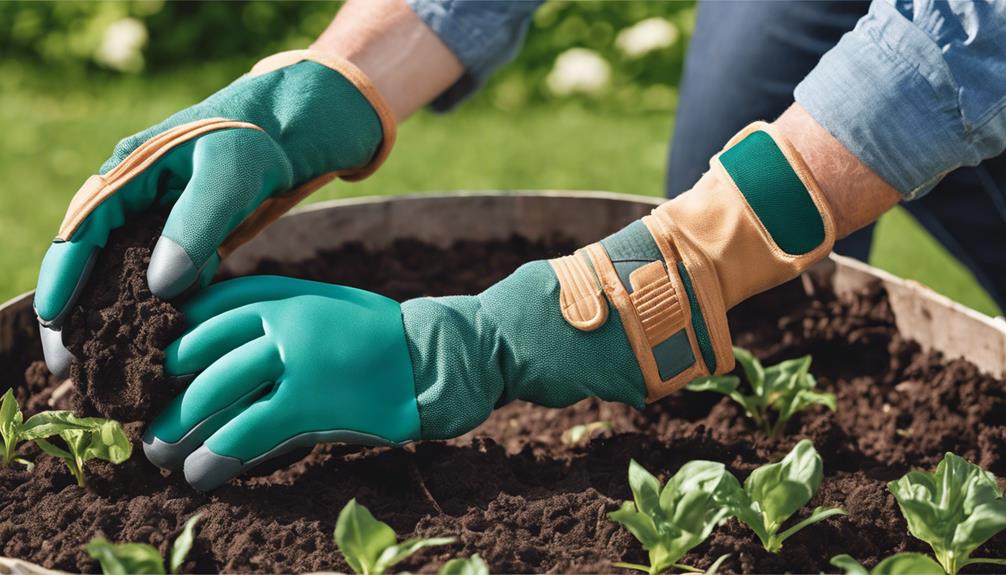
How can you ensure that your gardening gloves are easy to clean and maintain? To keep your gloves in top condition with minimal effort, follow these simple tips:
- Machine Washable: Look for gloves that are machine washable for quick and easy cleaning.
- Quick-Drying Materials: Opt for gloves made from quick-drying materials to avoid long drying times.
- Waterproof Coating: Choose gloves with a waterproof coating to prevent water absorption and make cleaning easier.
- Stain-Resistant: Select gloves that are stain-resistant to easily remove dirt and grime.
- Durable Construction: Invest in gloves with durable construction to withstand frequent washing and maintain their quality over time.
Budget-Friendly Options
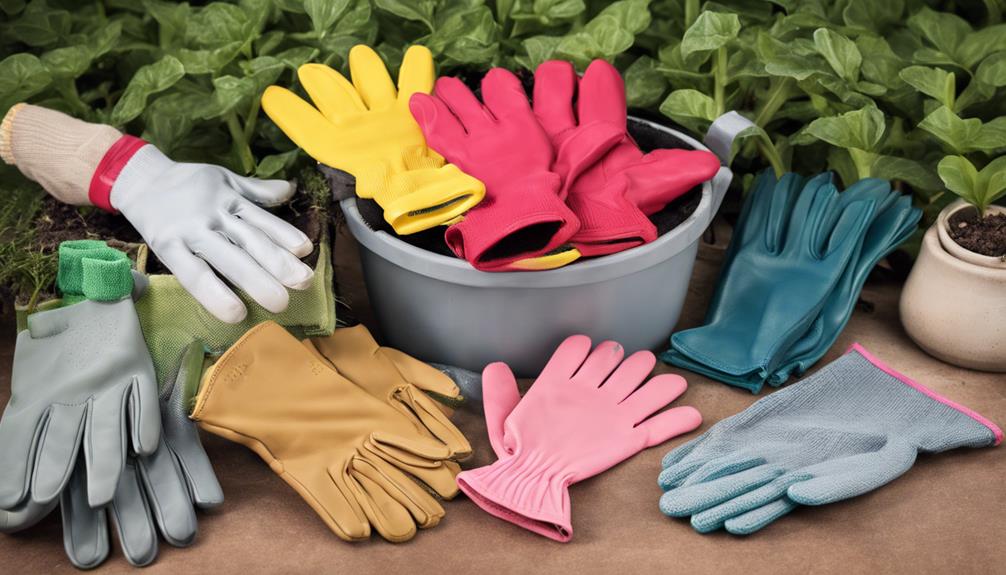
To find gardening gloves that fit your budget, consider exploring affordable options that still offer quality and durability. You don’t have to break the bank to get gloves that will protect your hands while you tend to your garden. Look for gloves made from materials like nylon, polyester, or rubber, as these tend to be more cost-effective than leather or specialty fabrics.
Online marketplaces and local gardening stores often have a variety of budget-friendly options to choose from. When shopping for gardening gloves on a budget, keep an eye out for sales, discounts, or bulk packs that can help you save money in the long run. Additionally, opting for gloves with a simple design and fewer extra features can also help lower the cost.
Reviews and Recommendations
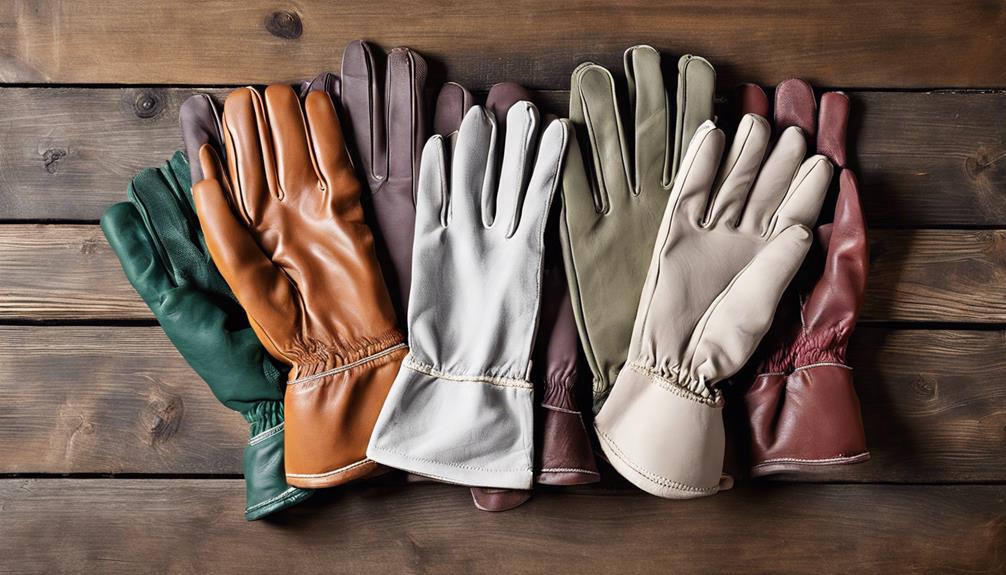
Explore various gardening gloves reviews and recommendations to help you make an informed decision on the best gloves for your gardening needs. Reading what others have experienced with different gloves can provide valuable insights into what might work best for you.
Here are some key points to consider when looking at reviews and recommendations:
- Durability: Look for gloves that users mention as lasting through tough gardening tasks without wearing out quickly.
- Comfort: Check for feedback on how comfortable the gloves are, especially during long gardening sessions.
- Fit: Reviews often mention if gloves run true to size or if adjustments need to be made.
- Grip: Users might highlight how well the gloves allow them to handle tools and plants without slipping.
- Versatility: Consider gloves that reviewers mention as suitable for various gardening activities to get more value out of your purchase.
Taking the time to research and read reviews can lead you to the perfect pair of gardening gloves that will make your gardening experience more enjoyable and efficient.
Trying Them On In-Store

Consider visiting a local store to try on various gardening gloves before making a purchase decision. Trying them on in-store allows you to assess the fit, comfort, and flexibility firsthand.
When you slip on a pair of gloves, pay attention to how they feel on your hands. Move your fingers around, make a fist, and stretch your hands to ensure they offer the freedom of movement you need for gardening tasks. Take note of any areas that feel too tight or too loose, as a well-fitting glove is crucial for both comfort and functionality.
Additionally, testing the gloves in-store gives you a chance to see how durable they are and whether they provide adequate protection for your gardening activities. By trying on different gloves, you can find the perfect pair that meets your specific needs and preferences.
Additional Features to Look For
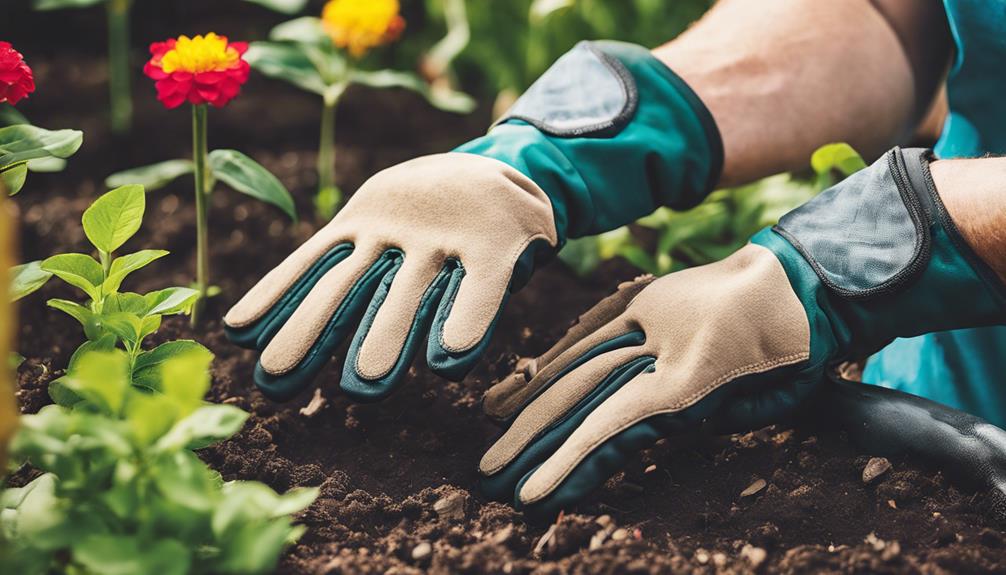
When choosing gardening gloves, look for additional features that can enhance your gardening experience and provide better protection. Here are some key features to consider:
- Waterproofing: Opt for gloves that are waterproof to keep your hands dry and comfortable, especially when working with wet soil or plants.
- Breathability: Look for gloves made from breathable materials to prevent your hands from getting too sweaty and uncomfortable during long gardening sessions.
- Adjustable Wrist Straps: Gloves with adjustable wrist straps allow you to customize the fit, ensuring they stay securely in place while you work.
- Reinforced Fingertips: Choose gloves with reinforced fingertips for added durability and protection against sharp thorns, prickly plants, or rough surfaces.
- Touchscreen Compatibility: If you like to use your phone or other touchscreen devices while gardening, consider gloves that are touchscreen compatible, so you don’t have to remove them constantly.
Choosing the Best Gardening Gloves
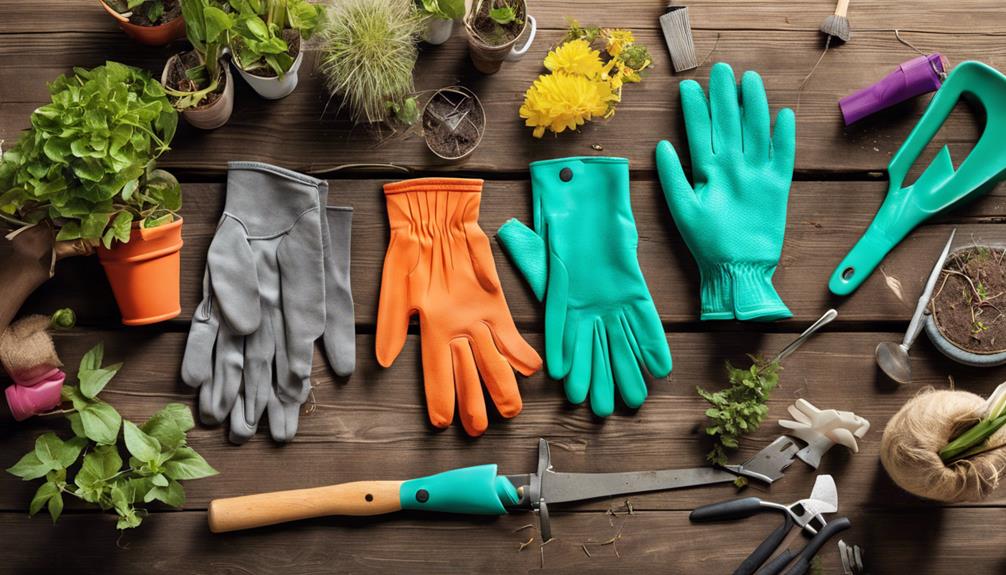
To find the best gardening gloves, prioritize features that suit your specific needs and provide optimal comfort and protection while working in the garden.
Consider the type of gardening you do – for delicate tasks like planting seeds, thin gloves with good dexterity are essential, while heavy-duty tasks like handling thorny bushes require thicker, puncture-resistant gloves.
Look for gloves with adjustable wrist closures to prevent dirt and debris from getting inside. Breathable materials like nylon or spandex can keep your hands cool and dry during long gardening sessions.
Choose gloves with reinforced fingertips for added durability when handling rough materials. If you work with chemicals or pesticides, opt for gloves specifically designed to protect against these substances.
Ultimately, the best gardening gloves are the ones that fit well, provide the right level of protection, and allow you the freedom to enjoy your time in the garden without worrying about your hands.
Frequently Asked Questions
Can Gardening Gloves Be Used for Other Tasks Besides Gardening?
Yes, gardening gloves can be versatile. They are handy for tasks like cleaning, painting, and even handling hot items. Just ensure you have the right type for the job to keep your hands protected.
Are There Specific Gloves for People With Allergies to Certain Materials?
If you have allergies to certain materials, it’s essential to look for specialized gloves. Opt for hypoallergenic options or those made from natural materials like bamboo or cotton to ensure comfort and safety.
How Do I Know if I Need Different Gloves for Different Gardening Tasks?
If you’re unsure about needing different gloves for various gardening tasks, consider the activities involved. Heavy-duty tasks like pruning demand thicker gloves, while delicate work like planting may require more dexterity with lightweight gloves.
Can Gardening Gloves Help Prevent Skin Conditions Like Eczema?
Wearing gardening gloves can shield your skin from irritants, aiding in preventing conditions like eczema. Embrace the protection they offer and enjoy gardening without worrying about skin issues. Find the right gloves for your tasks.
What Is the Best Way to Store Gardening Gloves When Not in Use?
When not in use, store your gardening gloves in a cool, dry place. Avoid leaving them exposed to direct sunlight or moisture. Hanging them on hooks or storing them in a breathable container will help maintain their quality.
Conclusion
So, now you know how to choose the best gardening gloves. Remember, the perfect pair will protect your hands while you tend to your plants.
But hey, who needs gloves when you have tough, calloused hands from all that hard work? Just kidding – protect those hands and keep on gardening!
Content are generated with AI, fact checked by editorial team.
Hi there! My name is Aaron and I am a gardening expert from the United States. I have always had a passion for gardening and have been practicing it for years. I have gained extensive knowledge and experience in gardening.


